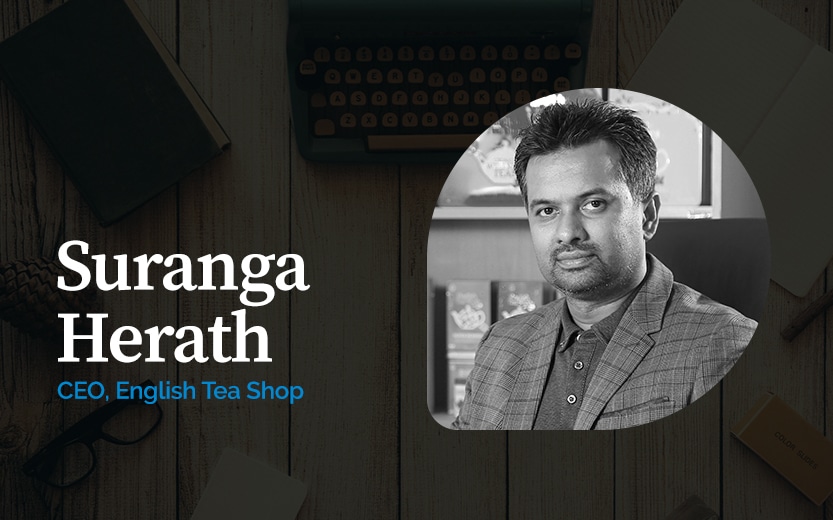Fairtrade Fortnight (25 February-10 March) is an annual opportunity to celebrate all that the organization has achieved over the years. In my view, no other organization has done more to make consumers stop, consider and care where their food, drink, clothes and jewellery come from.
Inspired by Fairtrade and consumer demand for ethically-sourced products, there is an emerging trend for manufacturers to develop their own sustainable sourcing models. Even the likes of Tesco and Sainsbury’s are following suit.
 And while a proactive commitment to sustainable sourcing is to be applauded, setting up an entirely new sourcing model – and doing it well – is no mean feat. I speak from experience of converting English Tea Shop to run on a Creating Shared Value model throughout our supply chain from seed to cup. The impact of creating and implementing our own sourcing model has been profound not only for the farmers but for our business and all those in our community, or our Prajāva as we like to call it.
And while a proactive commitment to sustainable sourcing is to be applauded, setting up an entirely new sourcing model – and doing it well – is no mean feat. I speak from experience of converting English Tea Shop to run on a Creating Shared Value model throughout our supply chain from seed to cup. The impact of creating and implementing our own sourcing model has been profound not only for the farmers but for our business and all those in our community, or our Prajāva as we like to call it.
So, based on my experience over the years, I wanted to share some of the key things I’ve learnt about setting up a sourcing model.
- Be clear on your motivations. The very first step should be asking yourself why you’re setting off on this path. Is it to help support and share value with those in your supply chain? Is it to improve transparency? Is it to have a more secure and reliable supply chain? Is it so you can source increasingly high-quality produce? Is it because ethical sourcing is important to your customers? Is it to be better for the environment? Is it all of the above? What’s important is considering what long-term outcomes you want to achieve, both for your business, and for those in the supply chain.
- Start small and scale up. Unless you’re starting a new business, it’s likely best to take a long-term approach to sourcing. Having direct relationships with producers is both essential and time-consuming, and building close relationships even more so. It may be best to start working with one producer or cooperative under your model, or on one project, and to grow from there.
- Your business model is only ever as strong as your Prajāva. Prajāva is the Sri Lankan word for community and taking a wide view of who this includes is vital. Creating shared value throughout a supply chain takes a great deal of thought – and it’s surprisingly easy to do the wrong thing when trying to do the right thing. That’s why close relationships are so important – you have to have an innate understanding of what people want and need, rather than just doing what you think they need. The stronger your Prajāva, the better placed you will be.
- Build a business of business people. This is one of the absolute best ways of sharing value through your supply chain. For us, this means helping our farmers to improve the quality and quantity of their yield through support, education and a trusted route to market rather than just paying a minimum price. For those who work in our factories, we have a profit-sharing initiative called Big Game which involves them in programmes such as open book management, knowledge sharing and budget games with the goal of making English Tea Ship a significantly employee-owned business. This ultimately drives employee engagement and increases productivity too – there has now been a 31% increase in value added per employee since The Big Game initiative was introduced. Without wanting to be too trite about it, helping people help themselves is much more sustainable and powerful.
- Figure out the measuring and monitoring system. If you’re going it alone, you need to find a robust way of benchmarking the outcomes of your model. Failing to do so could cause more harm than good. This could involve developing a framework for measuring social and economic impact for your investments and efforts and then tracking how business is directly and indirectly impacted as a result of such social progress.
- Maintain a laser focus on creating shared value. Creating a sourcing model is not without its ups and downs and there are times when commercial realities come knocking that can put you in difficult positions. My advice would be to focus your sourcing model on creating shared value that is value for people throughout your supply chain, but also for your business. For me, this is what makes a model truly sustainable in that it is then protected from short-termism during leaner periods.

As our society becomes even more ethically-minded, it will soon be the norm for businesses to adopt and drive growth through sustainable sourcing models. We’ve already seen a good selection of early adopters make their mark, and I hope that the fruitful results produced will encourage others to take a leap of faith.











